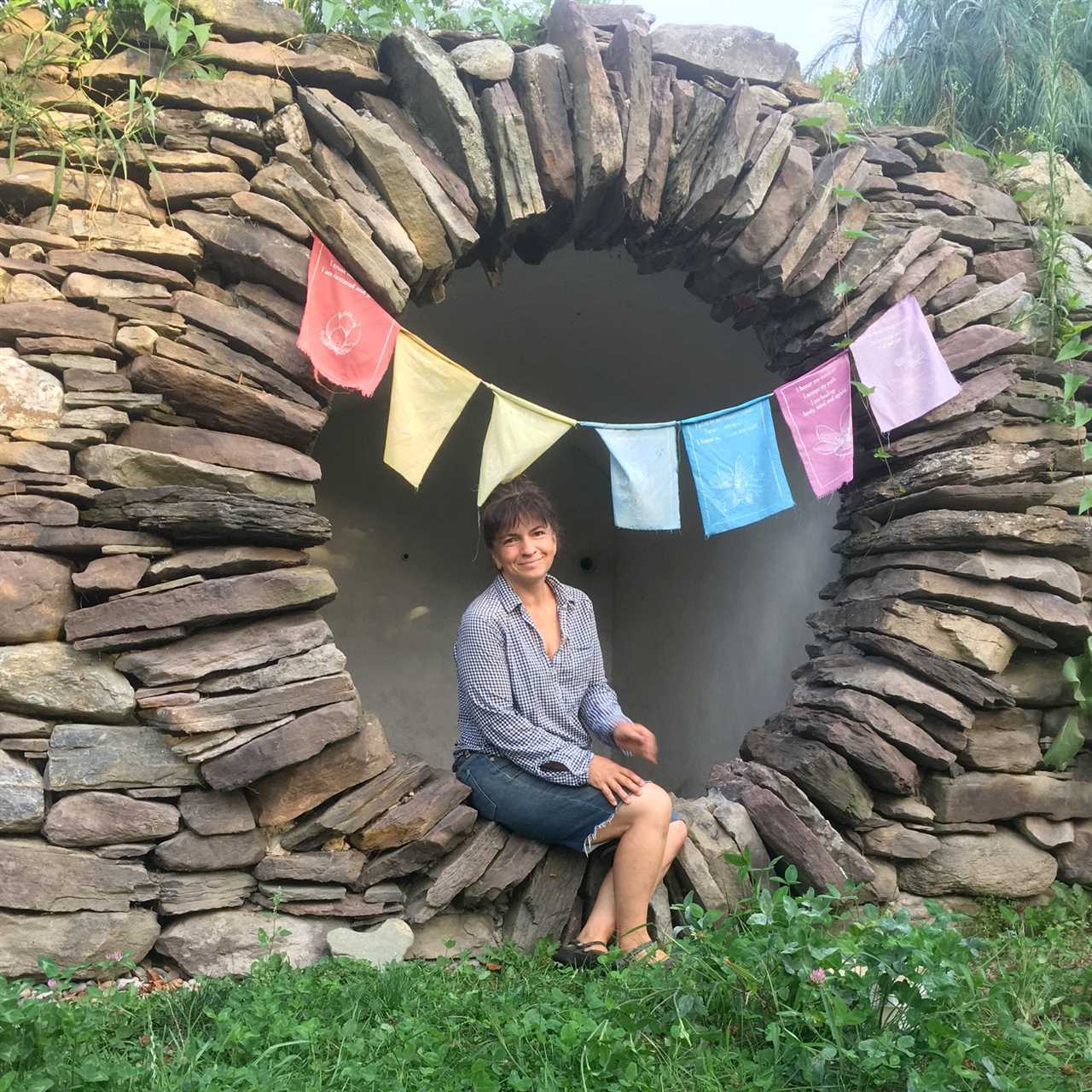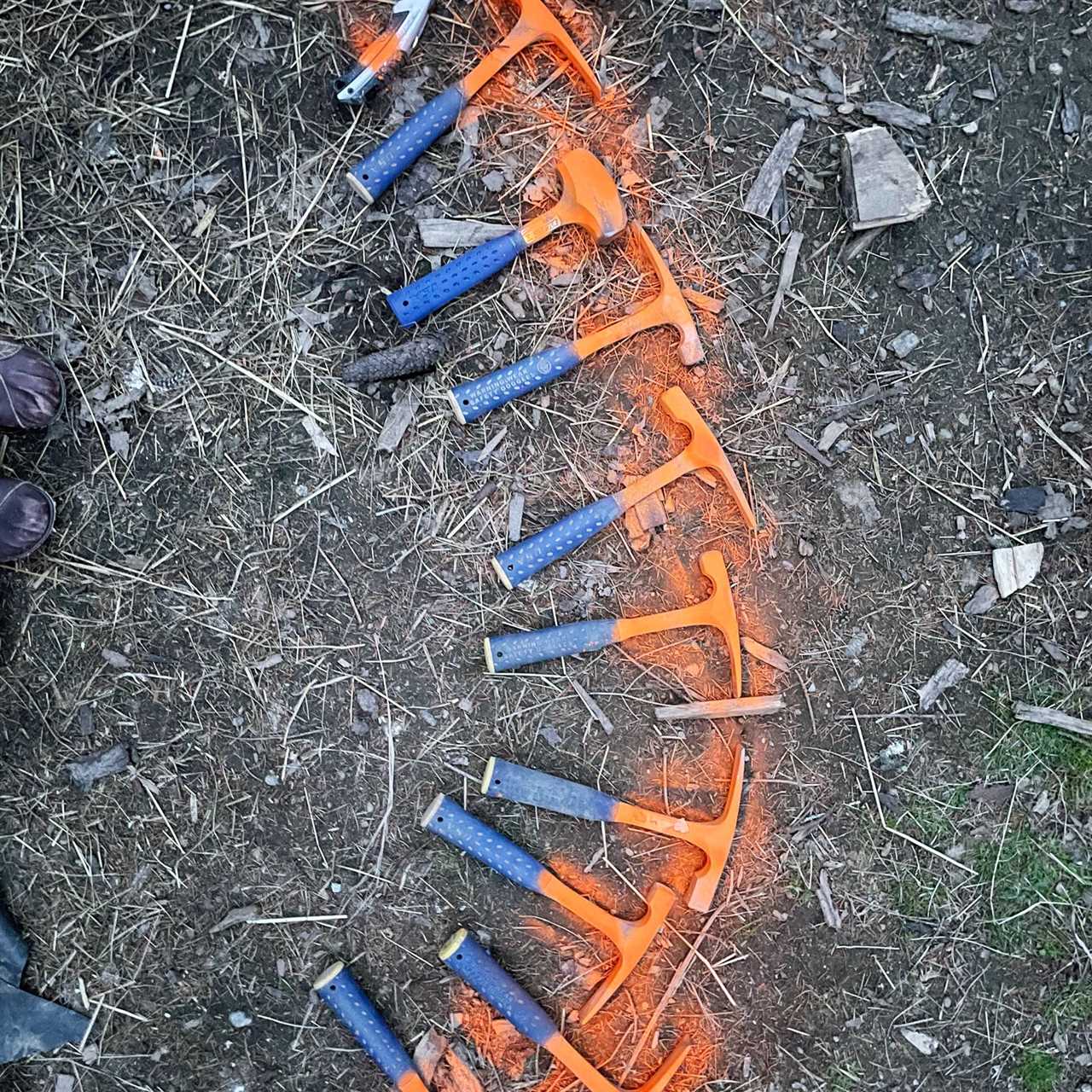This FH series introduces readers to a few of the women who make up 11 percent of the construction workforce in the U.S., spotlighting stories of their careers in the field. Know someone we should feature? Email us here.
Thea Alvin has been working as a stonemason for nearly four decades, starting when she was 16, helping her father mix mortar and carry bricks. “I was free labor for him, so it was an easy ask,” she says.
While other girls played with dolls, she lugged rocks and learned the craft. Apprenticed to masters for seven years, Alvin spent an additional two years in hammer work. She also traveled to Europe as a member of World Wide Opportunities on Organic Farms (a WWOOFer for short), working on farms and learning how masons practiced the trade in their countries. She eventually transitioned into sculpture with stone masonry as her medium.
Alvin is now considered one of the world’s foremost dry-stacking stonemasons. She’s worked on chapels, walkways and water features. One month she might be rebuilding a 15th-Century domed Trulli house in Southern Italy; the next, crafting a spring-fed cistern in an upscale Colorado yard. Creativity and pushing artistic boundaries are common elements in all her projects.
“Stone masonry as a career came as a result of loving being outside, of the challenge of the paradox of me doing it,” she says. “I love being an unlikely mason. I love being mistaken for innocent. And I love showing folks that I know my stuff. That has kept me hooked.”
Between professional tasks she tends to her Vermont goat farm, teaches intensive stonemasonry workshops and keeps all her business nuts and bolts in place.
We asked Alvin for her thoughts on the state of the stone masonry industry.
Q: Which projects stand out to you?
A: The labyrinth I built in Tennessee in September 2021 was the biggest of my career and easily the most beautiful. It was 150 feet across, with some walls being 12 feet tall. On the autumnal equinox, the light comes through the archway door.
Twelve of us worked on it — half women, half men. We lived remotely in the field for five weeks, so it was intense and had every chance to go wrong. It was also a new experience for me because I touched almost none of the rocks. I left the decisions of where each stone went up to the crew, while my role was logistics, like sourcing the material and interfacing with the public.
It was a really big move for me to step back and let other people do the work, but it went so right. It’s a piece of land art that is going to be monumental, and I’m so proud of the team. It was epic to watch the experience unfold for them. Four of them got tattoos of the labyrinth, so I think that that shows the level of bonding that we did there.
Q: What changes have you seen in stonemasonry during the last 10 years?

A: The amount of people who want to labor physically has diminished, while the amount they expect to be paid has increased. I may get an unreliable part-time helper who wants three times the wage of full-time worker 10 years ago. So I’m paying people more, but also talking to them more about the value I expect from their work.
It’s important to have an open dialogue about what the project is worth, and how their wage fits into that, to make sure they’re both getting and giving the value expected for that payment.
Q: How are you received as woman in the stonemason trade?
That has a good deal to do with what part of the world I’m in.
In Italy, I’ve had men take stone from my arms, thinking I was struggling or that it was too heavy for me when it was not, and actually too heavy for them. Here in the States, often I load my 80-pound bags of mortar before paying for them. [That way] I don’t have to deal with someone trying to help me load it when it’s difficult for them to do so, or create an awkward moment for that guy to have to acknowledge that I’m stronger than him.
I sometimes get accused of being a redneck, or accused of being a hippie. But I really believe that as an artist you can tread in all of those. You can have all of those things and not have to be black or white. You can have that beautiful gray part in the middle. It’s just like how I prefer the natural edge of stones rather than block shapes. I like the irregular nature.
Q: Any pros or cons to being a woman in the trade?
A: I think that the way I look at life is demonstrated in my style of walling: extremely forgiving and accepting. I love being an imperfectionist and supporting other folks to accept their own flaws. This is how I see my walls and my work, just like another person, full of interest and irregularities.
I think this is a particularly feminine perspective. I build curvy, sexy walls, with a soft irregular topline and tapers and inclusions, like the stone has a life of its own. This appreciation of the artfulness of the line, I think, and the mathematics of it, are feminine.
On a different note, I am short, so with my strong little legs I move stone differently than a person with a longer back. I never strain my body because of the shortness. I am already on the ground and I use my legs to lift. I also hike and play hockey to get out my energy so that I can be calm and focus on the things that take more finesse.
Q: Any advice for young women looking to get into stonemasonry or other trades?
A: Work, keep working, keep going, keep trying and own your [stuff]. Anticipate what to do next and be annoyingly helpful.
Also, right now employers are just happy if you show up. You don’t even have to be sober if your body is there. But if you are the kind of person who walks past a piece of trash on the floor and doesn’t pick it up, you’re not going to keep your job for long.
If you’re the kind of person who picks it up, puts it in the recycling bin, takes that to where it goes, and comes back — unless your boss is the one who dropped the trash on the floor to begin with — you’ve probably got a good leg up on the whole thing.
Q: What are your pro-specific tools?

A: Since I am a travel mason, I go light. I travel with two Estwing brick hammers and a three-pound hammer. My favorite hammer is a Mallorcan Hammer from Trowel & Holden, whose name is Karl. (All of my hammers have names and I paint my hammers a bright color so that I or my students don’t lose them when working out in the grass or forest.)
I buy a shovel or borrow one when I’m traveling by air, because it doesn’t fit in my stowed luggage. I have many shovels, but I like short-handed shovels with a handle on the end so I can easily turn the blade.
Thea Alvin Bio
Fusing art with the trades, Thea Alvin has created stone masonry projects around the world, received numerous accolades and been featured on Oprah and other TV shows. When not in the limelight, she lives in a funky farm house in rural Vermont, where she experiments with color and texture, dances in the rain and plays in the mud. She also gives workshops and tours of her sculpture park.
“Stone masonry is a series of problems that you make and solve,” she says. “I am not an incredibly linear person. I can see many sides of questions and work hard to find the most efficient and beautiful solution.”
Writer Karuna Eberl Bio
Karuna Eberl is a regular contributor to FamilyHandyman.com. She spent the last 25 years as a freelance journalist and filmmaker, telling stories of people, nature, travel, science and history. She has won numerous awards for her writing, her Florida Keys Travel Guide and her documentary, The Guerrero Project.
Did you miss our previous article...
https://rsssuperfeeds.com/life-hacks/how-to-handle-an-icemaker-that-isnt-making-ice






